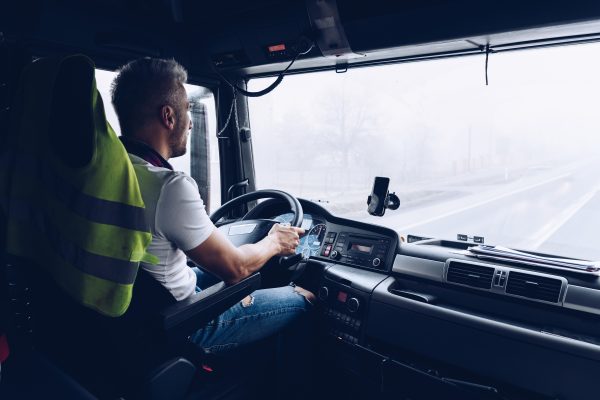Transitioning from Car Driver to HGV Driver: What’s Different?
With the UK logistics industry continuing to grow, more people are choosing to upgrade from car drivers to professional HGV drivers.
The appeal is clear: higher earning potential, job stability, and the chance to explore a new career that keeps the country moving.
However, the change from driving a car to handling a heavy goods vehicle is far more than just a bigger steering wheel and extra gears.
While both roles involve time on the road, the skills, responsibilities, and mindset required for HGV driving are entirely different.
From licensing requirements to strict regulations and new driving techniques, it’s essential for anyone considering the transition to understand what lies ahead.
Leaping successfully means being well-prepared for both the training process and the realities of life behind the wheel of a large commercial vehicle.
Understanding Licence Categories
The first major difference between car and HGV driving lies in the type of licence required.
A standard Category B licence covers cars and small vans, but to drive larger vehicles, you’ll need to obtain an HGV licence — such as Category C for rigid lorries or Category C+E for articulated vehicles.
The process includes a medical assessment, theory tests, hazard perception, and practical driving examinations, all overseen by the DVSA.
It’s also worth noting that professional HGV drivers must complete a Driver Certificate of Professional Competence (CPC) before they can legally drive for work.
This qualification ensures drivers understand road safety, load security, and professional driving standards.
While the process might sound daunting at first, good training providers make it straightforward and guide learners through each step with hands-on instruction and dedicated support.

Vehicle Size and Handling
Moving from a car to an HGV means adjusting to an entirely different sense of scale. HGVs are significantly longer, wider, and heavier, making manoeuvring and spatial awareness crucial.
Turning corners requires more space, braking distances are far greater, and blind spots can hide entire vehicles if mirrors aren’t checked correctly.
Even something as simple as reversing becomes a skill that demands focus and precision.
Understanding how to anticipate traffic flow and plan movements well in advance becomes second nature with experience.
Unlike car driving, where instinct and habit play a big role, HGV driving requires discipline and concentration at every turn.
Learning to judge width, manage the vehicle’s tail swing, and maintain smooth control of the gearbox are all essential parts of mastering a large commercial vehicle.
Driving Techniques and Skills
The step up to HGV driving introduces a host of new techniques that car drivers may never have encountered. Gear control becomes a more deliberate process, often involving multiple gear ranges or splitter gears.
Drivers must also get used to frequent mirror checks and constant awareness of what’s happening around the vehicle. Smooth acceleration, steady braking, and managing speed when carrying heavy loads all require skill and patience.
Beyond driving itself, HGV operators take responsibility for their vehicles’ safety before every journey.
This means conducting thorough walk-around checks, ensuring loads are properly secured, and using tachographs to record driving hours.
These responsibilities might seem like small details, but they’re essential to maintaining road safety and compliance with transport regulations.
Rules and Regulations
Car drivers moving into HGV roles quickly discover that the transport industry operates under much stricter rules.
Professional drivers are legally required to follow set working hours, take regular rest breaks, and keep detailed records of their activity.
Tachographs automatically record driving time to help ensure these rules are followed — and failing to comply can lead to serious penalties for both the driver and employer.
Additionally, all HGV drivers must hold a valid Driver CPC qualification and complete 35 hours of periodic training every five years.
This ensures they stay up to date with changing laws, safety standards, and industry best practices.
For car drivers used to minimal paperwork, this level of regulation may feel like a big adjustment, but it’s a vital part of maintaining professionalism in the logistics industry.
Lifestyle Adjustments
Becoming an HGV driver often brings a lifestyle change. Many roles involve early starts, long hours, or even overnight stays away from home.
While this can be challenging at first, many drivers appreciate the independence of the job and the satisfaction of seeing new parts of the country.
Time management and self-discipline become crucial for balancing work, rest, and personal life.
Maintaining physical and mental health is also key to success in the profession. Long hours on the road mean drivers need to stay active, eat well, and take proper rest breaks.
It’s worth remembering that fatigue can affect reaction times, so looking after yourself isn’t just a personal choice — it’s a professional responsibility. With good habits and a positive mindset, many drivers find the lifestyle both rewarding and sustainable.

Earning Potential and Career Opportunities
One of the biggest incentives for making the switch is the potential for higher earnings. HGV drivers are in demand across the UK, and employers are willing to pay well for qualified professionals.
Entry-level drivers can expect a solid starting wage, which increases with experience and additional qualifications such as ADR or HIAB training.
The industry also offers a wide range of career paths. From local delivery routes to long-distance haulage, there are roles to suit different lifestyles and preferences.
Some drivers move into logistics management, training, or fleet operations later in their careers. The transition from car driver to HGV driver doesn’t just open doors to new jobs — it opens a pathway to long-term career development.
Tips for a Smooth Transition
For those considering the move, preparation makes all the difference. Start by researching reputable, DVSA-approved HGV training centres and speaking to instructors who can explain the process in detail.
Building good habits early, such as practising observation skills and learning to stay calm in heavy traffic, can also make training easier.
It’s also helpful to connect with current HGV drivers, whether through forums or social media groups. Their insights into real-world driving and day-to-day life on the road can be invaluable.
Remember that confidence comes with time and practice, so approach each stage of training with patience and a willingness to learn.
Conclusion
Transitioning from a car driver to an HGV driver is a big step, but it offers tremendous rewards for those willing to put in the effort.
The challenges, from learning new driving techniques to adapting to a more structured routine, are balanced by the satisfaction of mastering a specialist skill and joining an industry that keeps Britain moving.
Whether you’re drawn by the earning potential, the independence of the road, or the opportunity for a stable, long-term career, becoming an HGV driver is an investment in your future.
With the right training and mindset, the journey from car to HGV can be both smooth and rewarding.
Share this

What you need to know
CLICK HERE to view larger video
Certifications




Latest News
Start Your Enquiry
Fill out the details below to start an enquiry:
Stay in the Loop
To receive information about courses and special offers that can save you money, please add your details here.

